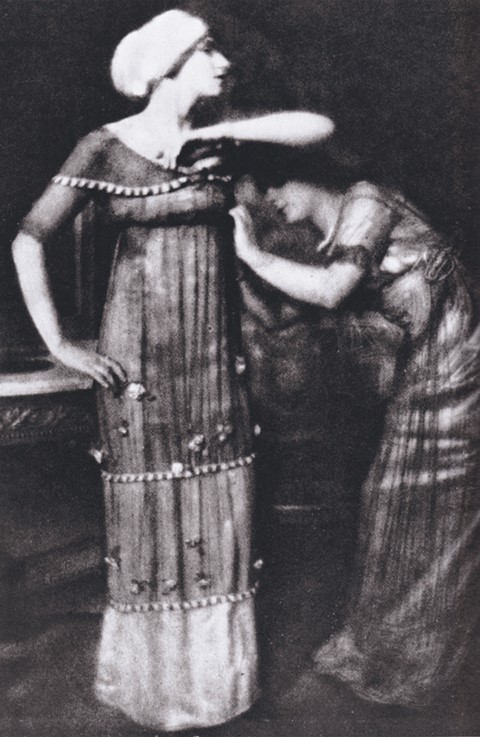"It's the photography in Diana Vreeland's book, Allure, which stops you in your tracks. Each black and white image is resonant with character; part of a perfectly selected...
"It's the photography in Diana Vreeland's book, Allure, which stops you in your tracks. Each black and white image is resonant with character; part of a perfectly selected collection that sums up one woman's experience of the first half of the 20th century. It is a myopic world of grandeur, money and elegance, but the pictures are full of understanding, pathos and humour, giving wisdom to the nuttiness of it all. It was from Allure that I first learned about Edward Steichen and Baron de Meyer; pioneering photographers that made electricity a part of the history of fashion.
Edward Steichen, born in Luxembourg in 1879 and brought up in Milwaukee after his family emigrated in 1881, was apprenticed to a lithographic company at the age of 15. He supplemented his income with photographic portraits. With the photographer and gallerist Alfred Stieglitz he founded the Photo-Secession movement in New York, which aimed to promote photography as a fine art for the first time.
Steichen's work took him to Paris, where in 1911 Lucien Vogel, the publisher of the fashion magazines Jardin des Modes and La Gazette du Bon Ton, invited him to apply his theory of photography as fine art to shooting fashion. Prior to this, fashion had merely been photographed to record the styles; usually at the Paris racecourses. Steichen shot mannequins wearing dresses by the couturier Paul Poiret. The pictures were published in the magazine Art et Decoration and, in 1980, reproduced in Vreeland's Allure.
"Steichen had used the techniques of art photography – composition and lighting – to create a fashion image. It was at this moment that electricity became an essential part of the fashion system as we know it"
Diana Vreeland was clear on fashion as art. 'There's very little art in the world,' she wrote. 'What there is is splendid, but let's not confuse it with fashion.' On the Steichen pictures, after acknowledging their style as 'avant-garde,' she said: 'Look at the size of those girls!'
Steichen had used the techniques of art photography – composition and lighting – to create a fashion image. It was at this moment that electricity became an essential part of the fashion system as we know it. Although technically it was the lighting that was the component powered by electricity, the image is the dream that sells. The lighting is what creates the atmosphere that manipulates us and pulls us into that dream. As Vreeland understood, some photographs are just electric." [Extract from We're Electric]
To celebrate the Ampera, Europe’s first electrically driven automobile with a zero-emission capability, this week sees the launch of We’re Electric; a unique exploration of the impact of electricity in industry, entertainment, art and fashion, with essays from writers including Will Self and fashion historian and curator NJ Stevenson, who profiles Steichen’s exploration into electric light and fashion as well as the work of designers Hussein Chalayan and the late Alexander McQueen.
We're Electric by Ampera is now available at The Idler Academy, 81 Westbourne Park Rd, and online here. Dian Vreeland's Allure is published by Little, Brown & Company.
